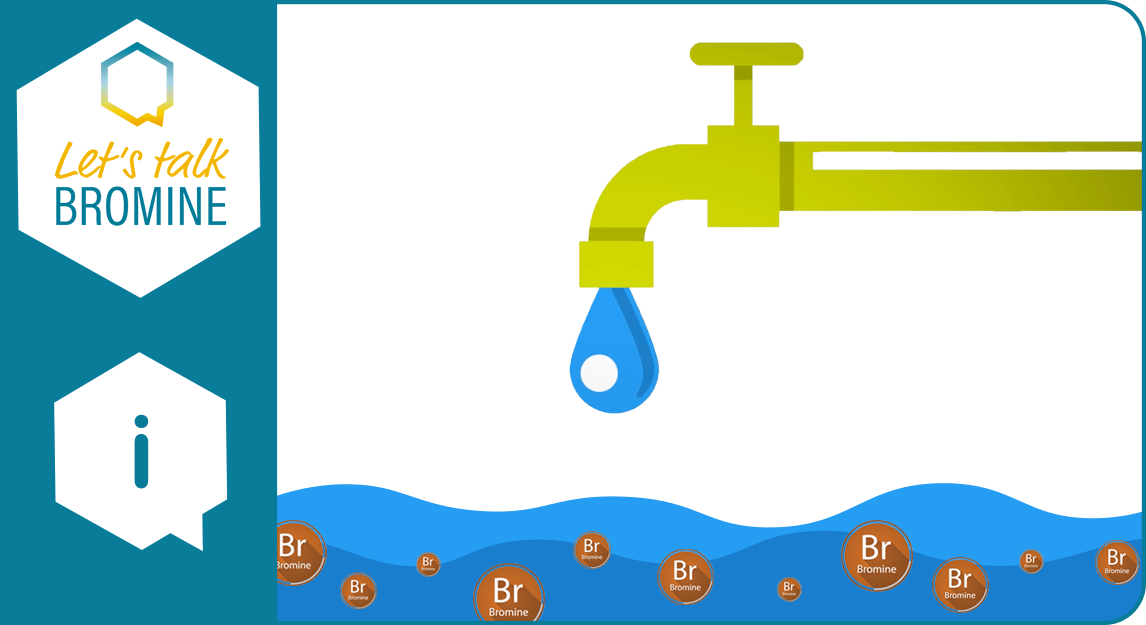
08 Jun Bromine and water treatment
Summer’s here, conjuring up images of long days by the swimming pool. However, microorganisms, algae and bacteria love the nice weather and cool water as much as we do. So how can we effectively purify and disinfect water?
Sustainable water management
Water is a precious resource. Sustainably managing water is one of today’s greatest challenges. Microorganisms, algae and bacteria can seriously threaten human health, the environment, and the safety and effectiveness of industrial processes.
Bromine-based products can disinfect water from harmful contaminants very effectively. Bromine dissociates in water by forming hypobromous acid (HBrO). This has powerful disinfectant properties, owing to its ability to kill the cells of many pathogens. It’s effective against tough waterborne viruses, such as poliovirus and rotaviruses, as well as a wide spectrum of bacteria.
Bromine is used in many essential industrial applications to ensure clean water:
Wastewater treatment
Bromine chemistry can disinfect water from harmful contaminants very efficiently. It’s excellent at removing microorganisms that accumulate in water during industrial processes.

Cooling water systems
Microorganisms, algae, and bacteria can endanger the cooling system of power plants. They depend on brominated solutions to maintain the efficiency and safety of the plant.

Brewery pasteurizers
Bromine-based solutions can kill bad smells. Industrial pasteurization at places like breweries can create smelly water that would be intolerable without this purifying chemical.

Pulp and paper-mill systems
Paper mills and other factories depend on bromines to improve their environmental footprint and to treat their water cost-effectively.

Decorative fountains, pools, and spas
So, what about that trip to the swimming pool, or maybe a spa? Chlorine is a very common swimming-pool disinfectant used in residential and commercial pools. However, it can cause skin irritation and smells heavily. Chloramines can also decompose and form a corrosive solution which may attack the underlying surfaces made out of steel. Here’s where bromine comes to the rescue. Its goal is to counteract the negative effects of chlorine.
Bromamines (a major byproduct of bromine pool chemistry) are less likely to become airborne. They don’t gas off. Instead, they stay in liquid state, so they don’t get inhaled by swimmers. Thus, bromine has less of a chemical odor than chlorine.
Bromine is widely found in spas and hot tubs, as it remains stable in hot water. Bromamines can attack and kill bacteria just about as effectively and quickly as free chlorine or free bromine. But you need less bromine than chlorine to sanitize a pool.
Last but not least, bromine is very beneficial to people with naturally sensitive skin.

What are your thoughts on bromine and water treatment?
Do not hesitate to share this article, to give your opinion and to start the conversation.
SOURCES
https://www.youtube.com/watch?v=sFCpb0R1Rsk
http://bsef.com/bromine-applications/water-treatment/
http://www.spectralightuv.com/blog/bromine-used-in-swimming-pools/
https://aquamagazine.com/service/bromine-in-swimming-pools.html




No Comments